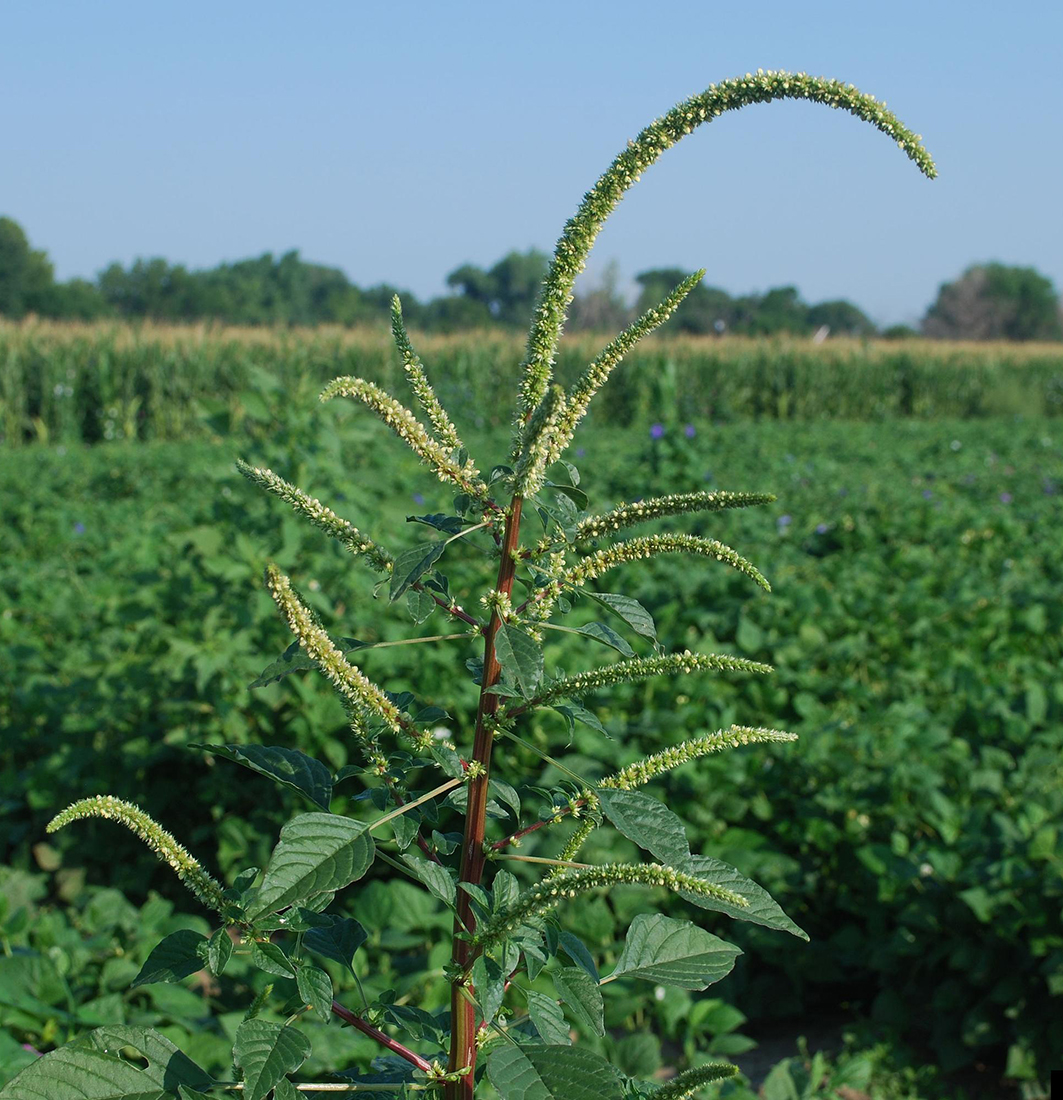Palmer Amaranth
- Pigweed (Amaranthaceae family):
- Amaranthus palmeri Watson
- EPPO code:
- AMAPA
- Other names:
- Palmer’s pigweed, carelessweed, dioecious amaranth
Species information
- Lifecycle:
- Annual.
- Propagation:
- Reproduces by seed; dioecious (separate male and female plants).
- Emergence:
- In spring, typically after lamb’s quarters.
- Distribution and habitat:
- Palmer amaranth has not yet been found in Ontario or other provinces in Canada. A native of the southern USA, it has recently been moving north and has been found as close as Michigan. Adapted to dry and hot conditions in the southwest USA, it is now abundant in cultivated fields.
- Competitiveness:
- According to a summary by Legleiter and Johnson (2013), plants can grow as much as 5–8 cm/day and yield losses above 70% have been documented in both corn and soybeans.
- Resistance:
- In the United States populations exist that are resistant to Group 2 (for example, imazethapyr), Group 3 (for example, pendimethalin), Group 5 (for example, atrazine), Group 9 (for example, glyphosate), Group 14 (for example, fomesafen) and Group 27 (for example, mesotrione) herbicides.
Identification clues
Seedlings
- Cotyledons:
- Linear and narrow.
- First leaves:
- round ovate with an obtuse tip that ends in a notch. The petiole is longer that the leaf blade.
- Mature leaves:
- Palmer amaranth’s mature leave are ovate to diamond shaped (tapered with a pointed tip), often with a wavy margin. The petiole (leaf stalk) is typically thin and longer than the leaf blade. This is one method of distinguishing it from other pigweed species. Many, but not all plants may have a white to grey, V-shaped mark on the leaf blade.
Mature plant
- Stem:
- Its stem has an alternate leaf orientation, is smooth with no hairs, and grows between 1.5–2.5 m in height.
- Seed heads:
- Its seed heads have long, spikey clusters, similar to waterhemp, but with a terminal seed head much longer that can reach up to 90 cm long (Legleiter and Johnson, 2013). Only the female plants produce seed.
- Roots:
- Taproot
Often mistaken for
I know it's not Redroot pigweed because the stem of redroot pigweed is covered in dense, short hairs, whereas Palmer amaranth’s stem is smooth and hairless. The petiole of Palmer amaranth is longer than the leaf blade whereas redroot pigweed’s is shorter.
I know it's not Green pigweed because the upper stem of green pigweed has a cluster of dense hairs, while the stem of Palmer amaranth is smooth and hairless. The petiole of Palmer amaranth is longer than the leaf blade whereas green pigweed’s is shorter.
I know it's not Waterhemp because the petiole of Palmer amaranth is longer than the leaf blade whereas waterhemp’s is shorter.




Updated: January 16, 2023
Published: January 16, 2023